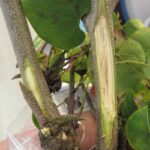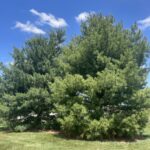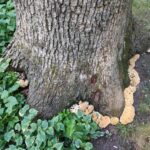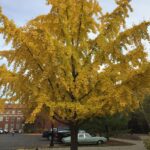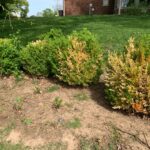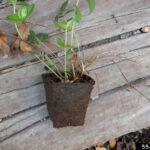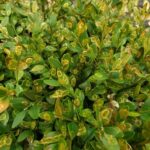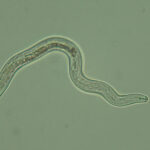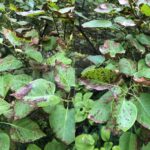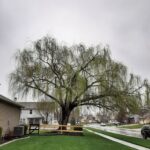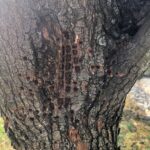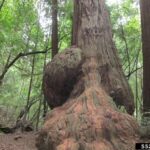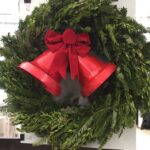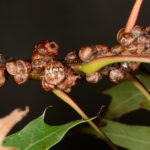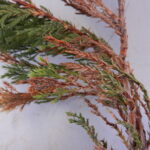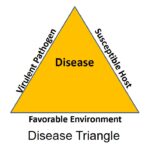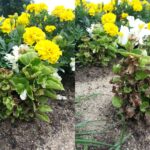Early June, we received a white pine sample at the Purdue University Plant and Pest Diagnostic Lab that showed early season needle loss lower in the tree canopy (Figure 1, 2). The majority of conifers hold onto their needles for multiple years, so loss of needles, even in the fall, can come as a shock[Read More…]
The past two months have been relatively wet and cool to warm. This prolonged period of overcast conditions, high humidity, and light to moderate rainfall is perfect for some of our foliar disease issues. “April flowers bring May Leaf spots” doesn’t have the right ring to it, but we are seeing quite a bit of[Read More…]
Vascular streak dieback is an emerging issue on woody ornamentals in the nursery industry. We have provided information on this topic as the situation has been unfolding (https://www.purduelandscapereport.org/article/vascular-streak-dieback-of-redbud-what-plant-pathologists-know-so-far/; https://indianagreenexpo.com/sessions/vascular-streak-dieback-an-emerging-issue-in-nursery-stock/). Researchers and Collaborators working on vascular streak dieback will be presenting up-to-date information during the tHRIve webinar hosted by Horticultural Research Institute on Thursday, April 11,[Read More…]
I think white pines are beautiful trees, especially at maturity, and they have the added advantage that they are one of the few conifers that don’t try to kill you with their needles. Besides working with the foliage, have you ever had to “rescue” a child who climbed too high in a spike-infested deathtrap of[Read More…]
Inonotus dryadeus is one of the more common wood decay fungi we receive at the diagnostic lab in association with declining trees, specifically oaks. Inonotus is found so frequently on oaks it has the common name oak bracket fungus, but it can cause root rot of a number of other hardwood trees (including maples, sweet[Read More…]
Many trees are planted for their beautiful fall color, especially in locations where the climate provides reliable autumn weather. I have said this multiple times during extension talks and conversations with submitters to the PPDL, but I seem to have not experienced a ‘normal’ fall since moving to Indiana with how erratic the weather has[Read More…]
In the last five years, we have received 233 samples from Indiana, alone, with concerns ranging from boxwood leafminer to Volutella dieback and cold damage (Figure 1, 2, 3). Often, we find multiple problems on any given sample, and very frequently we see Volutella in association with dark cankers of stems that appear to have[Read More…]
Periwinkle (Vinca minor) has a few disease issues that can cause severe damage to Vinca in cool wet weather, including Rhizoctonia stem and crown rot, Phytophthora root and crown rot, and Phoma stem blight. The last disease, Phoma stem blight, can cause severe damage to Vinca early in Spring when new stem growth emerges (Fig[Read More…]
There have been a number of samples we have received at the PPDL in recent weeks that bear similar problems worth noting. It is still relatively early for significant in-season disease development due to how cold it has been, although we have certainly had enough rainfall to encourage fungal growth. We have received multiple samples[Read More…]
A new disease called Beech leaf disease (BLD), associated with native and ornamental beech trees (Fagus spp.), has been making its way eastward from Lake Erie. First observed in 2012, trees show dark interveinal leaf banding, deformation of the banding tissue, and leaf curling under increased disease severity. Leaves can be stunted and leathery in[Read More…]
Lilacs (Syringa spp.) are some of my favorite plants alongside Ginkgo (males, at least) and while I could wax poetic about their great aesthetic characteristics I will just say that they have beautiful spring flowers and they smell great, too. However, they do have a handful of problems that cause them to look a little[Read More…]
While recent temperatures have been moderate in many parts of the state, rainfall has been lacking. (See The Annual Drought Article). There are chasms in the clay of my backyard that will swallow my kids and dogs whole. While I am not truly worried about the safety of my smaller family members, a lot of[Read More…]
When we see round holes in the bark of a tree we often think the cause might be due to wood boring insects or bark beetles. However, that is not always the case. Small holes arranged in neat, uniform rows and columns on the trunks of trees or woody shrubs are usually caused by sapsuckers,[Read More…]
Determining the cause of dieback and decline symptoms in landscape trees can be very difficult due to the many cultural, environmental, and biological factors that could be involved. The first place you should look for a culprit when dealing with this type of tree problem is the base of the trunk and the roots. Stem[Read More…]
Galls are gnarly-looking problems for plants and now is the perfect time to be looking for galls on woody ornamentals in the landscape. Without their leaves, these abnormal growths on branches can be easy to spot as you look through the open canopy (Fig 1). There are many different types of galls or gall-like structures[Read More…]
We are in the swing of the holiday season and Christmas decorations, ranging from trees to living wreathes, are for sale at stores. Thinking ahead, you might already have in mind how to dispose of plant material after the holidays, but it is important to take into consideration an important pillar of plant disease management[Read More…]
Northern red oak (Quercus rubra) is a Midwest native and is generally well adapted to growth across much of the region, but we get questions about dieback or ‘flagging’ on it fairly regularly. The two most common causes of twig dieback on this host are Kermes scale (Allokermes galliformis and A. kingii) and fungal canker/dieback[Read More…]
Junipers have to be my favorite group of evergreens, behind a select few pine species. They have a fantastic fragrance, are evergreen, many can tolerate drought, are an ingredient in gin (definitely a bonus), and work well in a variety of landscape uses, including as a barrier plant. They look great year round, except when[Read More…]
How are your plant identification skills? Personally, without a reference, I tend to have difficulty identifying some of the less commonly used trees in the landscape. However, being a disease diagnostician/plant pathologist I do have a fallback strategy – the diseases. One of the key points here is some symptoms are so characteristic of, or[Read More…]
Rhizoctonia is not very picky. The fungus has a very wide plant host range where it can act as an endophyte, not causing damage to the colonized plant; a mycorrhizal symbiont, in some cases being essential for the hosts survival, like in some orchid species; and, as we commonly see it, a pathogen that causes[Read More…]



